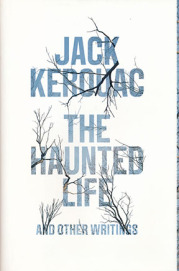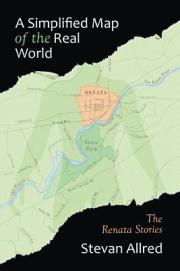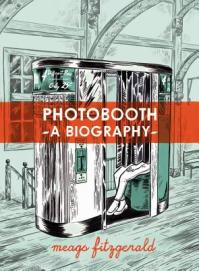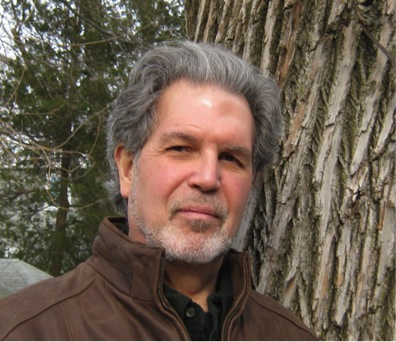 by Eric Hoffman
by Eric Hoffman
Burt Kimmelman teaches literary and cultural studies at the New Jersey Institute of Technology. He is the highly acclaimed author of eight collections of poems. Kimmelman’s poetry has received praise from such notables as Robert Creeley (“a rare evocation”), Jerome Rothenberg (“a strict & powerful accounting”), Alfred Kazin (“artful, fastidious, learned”), and Susan Howe (“a singularly locating force”). In addition to his poetry, Kimmelman has also produced an impressive body of critical work, including numerous penetrative essays as well as two full-length books, The Poetics of Authorship in the Later Middle Ages: The Emergence of the Modern Literary Persona (Peter Lang, 1996) and the ground-breaking study The ‘Winter Mind’: William Bronk and American Letters (Fairleigh Dickinson, 1998). It was this latter effort, first encountered over a decade ago during research on my biography of George Oppen, which led me to contact Kimmelman, initiating a conversation on poetry that continues to this day. A small cross-section of that conversation is here provided, albeit in the less casual format of a formal interview, occasioned by the recent publication of Kimmelman’s Gradually the World: New and Selected Poems, 1982-2013 (BlazeVox, $18). This interview was conducted via e-mail primarily from April-May 2014, with a brief follow up in July.
Eric Hoffman: Burt, a fair amount of your work experiments with formal verse, in most cases with syllabics. What is it about working this way that appeals to you? Do you believe that working with syllabics encourages invention?
Burt Kimmelman: I first set eyes on Donald Allen’s watershed anthology, The New American Poetry, in 1965. A decade before the Allen book, Charles Olson had published his ground-shaking essay "Projective Verse" (1950); that essay was given pride of place in the poetics section of Allen’s book. So, for a fledgling poet like myself, the question of writing free verse was not a no-brainer so much as moot (I had written some sonnets, haikus, a couple of concrete poems etc., and did get great pleasure out of set form, but was not at that time in a position to have any particular form work for me in any kind of creative or generative way). Olson's astonishing essay (to say nothing of his amazing poetry, an exemplar I took to heart) explained, so to speak, how to leave free verse behind for something rigorous but not formal in any sense except the sui generis sense—as Robert Creeley had said, “form is nothing more than an extension of content.”
To speak of how I and other young poets were transformed or at least ignited by the Allen anthology is not amenable to overstatement. We were of course reading Ezra Pound, H.D., William Carlos Williams et al. but not in any college courses because they weren't in them. I discovered Oppen a year or so later, not yet Zukofsky or the other Objectivists who were aesthetically the sponsors of that anthology; and I had met and begun a correspondence with William Bronk, and also with Joel Oppenheimer, another early mentor. Decades later, however, I gravitated toward syllabication both because I was feeling tapped out a bit with the “new American poetics,” and because I found myself wanting to respond in kind to a pond near an ocean in Cape May Point, New Jersey.
My family shared a summerhouse there with Fred Caruso and his family. One summer I started jotting down brief percepts of the life in that pond—the water, weather, and wildlife—brief statements I thought could use the unobvious rigor of syllable counting (in various patterns, sometimes of unequal line lengths—I was to settle into uniform lines, though I was appreciative of John Taggart's later reminding me of other syllabic possibilities, and on another basis of Cid Corman's cautioning to stay away from adjectives, in a letter boasting of having published an entire collection without a single one). This poetics comported perfectly with what Fred was doing. He had brought a watercolors set to the shore and decided he'd do paintings of the pond in just black and white. In conversation we realized that a collection of the paintings and poems, both about the pond, would be nice, since a shared sensibility was emerging, a quality both his water colors and my brief syllabic haiku-like poems exhibited. We worked on the poems and paintings for a little less than three years, during winters from Fred’s photos; The Pond at Cape May Point appeared from Marsh Hawk Press in 2002. From that point in time I've been writing syllabic poetry almost exclusively.
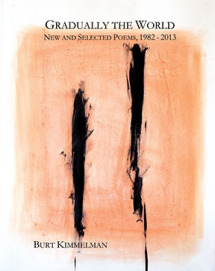 I've quipped to people (including you) that my syllabic work is Language Poetry on Prozac. Traditional formalism and procedural poetry are each different but maybe my later "verse" inhabits a Venn-diagram middle ground. A syllabic moving-forward towards a poem does generate surprising, for me better work because a constraint, one that evolves, maybe out of a phrase or maybe from an image in words, forces me to dig deeper to write for it and within it. I love the surprises.
I've quipped to people (including you) that my syllabic work is Language Poetry on Prozac. Traditional formalism and procedural poetry are each different but maybe my later "verse" inhabits a Venn-diagram middle ground. A syllabic moving-forward towards a poem does generate surprising, for me better work because a constraint, one that evolves, maybe out of a phrase or maybe from an image in words, forces me to dig deeper to write for it and within it. I love the surprises.
So is constraint “invention” or inspiration? Invenire in Latin means to find; that etymology informs the entire western literary tradition since classical Rome, including proceduralism (let’s set Conceptual Poetry aside), as in troubadour or trouvére. There’s something else: while writing syllabic verse can demand that the poet comply with a formal structure, that poet can also decide to abandon that invented structure for another. There is a singular flexibility not available to the sonneteer, and a singular muscularity not available to the free-versifier.
Let's say that a particularly interesting phrase consists of six syllables and I want to preserve the phrase in a single line in which that is all there is, standing alone and thereby privileged, as it were, through such a placement; so I go about writing more six-syllable lines to go with it, perhaps especially in support of it, and I may even go so far as to construct six-line stanzas, each stanza containing a complete sentence in itself. Then, in my searching for the language to make all this happen, I come up with another linguistic construction I like, but I can't fit it into my now-preset form. Do I de-engineer the poem and then find another syllable count and stanza formation with or without, say, a lot of enjambments including ending lines with articles or prepositions rather than nouns or verbs (i.e., what’s the feel I want in the poem)—or do I stick with the originally devised pattern, abandoning my new pithy phrase? I might end up writing a poem that will be different from what I had been thinking the poem would be "about”—indeed this is often what turns out. But of course I'd rather my poems not be about anything and instead just be language events in and of themselves.
EH: In your experience, does this kind of formalism demand a larger or more pervasive sense of the mechanics of language, and if so, does this awareness lend your poetics more “concision” or “muscularity,” for lack of a better word? In other words, does formalism sometimes triumph over spontaneity or do you find that writing syllabically encourages you to attempt language or imagery that might not otherwise present itself in free verse?
BK: Before I try to answer this set of questions directly, we might think about what is meant by “spontaneity.” When is anyone ever free of context? I’m not opposed to Allen Ginsberg’s dictum “first thought, best thought,” yet I just can’t settle for that as a totality of praxis. Apposite to this, possibly, is the chance operations methodology of John Cage or Jackson Mac Low. Yet really, once having consulted the I Ching, why would the poet wish merely to settle for what happenstance dictates? And so the tweaking begins.
To what I think is your real question, now, which I see as having two aspects—the poet’s awareness of mechanics (thus getting to the issue of spontaneity or creativity with the tools of writing either as hindrance or boon to the writer), and the poet’s working with a form to achieve “muscularity”: Working formalistically is an expedient way to become aware of the mechanics of language and is a method for understanding them; however, I also believe that if a poet has not tried to write free verse then the full comprehension of what language is will not be possible. You simply are forced to grapple with words by considering, by experiencing, what they do—in John Searle’s sense in How to Do Things with Words (which especially takes into account speech acts, stressing that dynamic of language—but also in the sense of what is a noun, what is an article, how aware was Williams of prepositions and lineation and what the new writing of his time was about, really, when he put “upon” on a line by itself in “The Red Wheelbarrow,” a formalistic poem, or when he was hanging out with the Oppens and getting published by their To Press? (I gave a reading in Paris recently after which the marvelous scholar Hélène Aji shrewdly pointed out that my poems contain a preponderance of monosyllabic words. This is so. One constructive effect of such word choice is that, serendipitously or not, it allows me to unpack a poem-in-draft more easily when I’m still not especially committed to a lineation or the like. On the other hand, I can also find space in a line more easily when I wish to use a particular multisyllabic word that might work in counterpoint—something Williams knew to do, as in the extra-syllabic “probably” and “delicious” in “This Is Just to Say.”)
So, in the purely mechanical sense of language, why not work in forms, since they are heuristics for arriving at an understanding, and personally they may be the most suitable methodology for writing poetry, whether the poetry is verse or not? Not to get pedantic about this, but let’s remember where poetry has come from historically. It’s only with the invention of writing that the mechanics of historiography, such as developed by the Old English sceop, for instance, came to be appreciated as aesthetical rather than merely as craft, once the poet did not any longer keep the record of the tribe in memory (cf. Pound’s coinage sagetrieb that then became the very important journal by that name, thanks to the late Burton Hatlen).
Now, rather than go down that dark alley where a number of people have made valid distinctions between proceduralism and older formalisms like sonnet-composing, let me just move on to the question of concision. Here too, however, there is a bit of a knot: I think proceduralism can be seen as an outgrowth of American avant-garde beliefs and practices; and my feeling that I derive a concise poetry or verse out of syllabics also has to do with a tradition I’ve always worked out of as a poet (as Zukofsky wrote to Hugh Seidman, in advising him to “cut, cut, cut”). Yes, I end up someplace else than where I began, someplace I did not foresee, because my struggle with constraint has forced me there. I also love and have been trained to love concision (Pound’s condensare, another coinage—does anyone read Briggflatts anymore?). I think the greatest sonnet writer in the English language is Donne. Is he concise? You bet he is. You want to study good writing, look at what he does with that form. Shakespeare as a sonneteer? Please!
EH: Do you ever find yourself composing a poem non-syllabically, and then find it edging toward syllabics, not because it encourages a type of language or thought exploration that non-formal verse might indicate, but because your voice—again for lack of a better word—"works" syllabically?
BK: I either have to qualify or take back what I said (not totally in jest) before about my poetry being Language Poetry on Prozac—or at least as much as my reference goes to LangPo like Ron Silliman's or maybe Lyn Hejinian's (in contrast to Charles Bernstein's or Bruce Andrews', for instance), and while I’m at it most definitely in contrast to Conceptual work by someone like Mathew Timmons or perhaps Vanessa Place, which I can't help feeling is art rather than literature, if such a distinction is still possible within the North American avant garde. For me the constraint comes after some irruption of language has occurred. At this point, does that language constitute what you are calling a “voice”? At such a point syllabification, what I could say is a heuristic device or simply method of composition, takes over for me—sometimes as a new ordering force, other times as something more, for instance as a driving force that can result in a poem I had not a clue of when I began working on “the” poem (the final, purportedly finished, poem maybe not traceable back to a scintilla of its origin—like in Frank O'Hara’s “Why I Am Not a Painter” about a Mike Gold canvas’ evolution). All the same, I make choices—even if merely in the most minor way.
But let's get back to your use of the word “voice.” Firstly, I think you've inadvertently set up a false dichotomy in your question, perhaps even two suspect dichotomies. For one, I'm not sure our premise should be that a procedural constraint must, or will in some instances, lead to insights or percepts of an "exploratory" nature, let’s say, such as free verse might afford (was I questioning whether or not free verse can even do that?). Also, whatever we might actually be thinking of when we use the term “voice,” that thing can possibly emerge either within free verse or syllabic verse. However, a constraint might impede the creation of a “voice,” in some or most cases.
Is not the constraint ultimately about, if not itself (in LangPo), then about language per se—about language as material? Yes, a number of my poems have a narrative of a sort or a voice or at least some kind of throughline, let’s call it, due to focus or subject matter (I try to create explicitly syntactic units)—yet I’m not wedded to the notion that a poem of mine must be "about" anything, and in fact at times I struggle to make a poem, within the constraints I choose, which is about as little as possible.
Was Oppen being a bit histrionic when he declared that language is the enemy (“Possible / To use / Words provided one treat them / Like enemies”)? But really, let's stop glorifying the making of poetry (is this what Place meant when she said that "Conceptual writing wants to put poetry out of its misery"?) and instead recognize something about the creative act, something not obvious but which is essential about the nature of literature (and art). I wonder if in your question you're at all thinking of Robert Grenier's "I hate SPEECH." To loop back to what I said before about orality and literacy, I hope I’m not contradicting myself to ask if poetry can be poetry when it in no way contains even the slightest echo or afterglow of spoken or sung word(s).
EH: Speaking of the creative act, and to shift gears a bit from mechanics to aesthetics, as I look through your New and Selected Poems, it strikes me that a fair percentage of your poems are ekphrastic, using various forms of art as a springboard for poetic rumination. In some cases the poems concentrate almost wholly on the work of art itself, while at other times the artworks more or less trigger a poetic response. What, aside from the physical availability of an abundance of art—you live in New Jersey, just across the river from New York City, and many of these poems relate visits to the Met, the Whitney, and the Guggenheim, among others—attracts you to this specific poetic form? Do you think that being in conversation with the visual arts positions your poetry within a broader continuum of artistic expression?
BK: Well, yes, but let’s press a little harder on what “continuum” might mean. Allow me to fill in some background, which may indirectly help get to what I think you are focusing on.
I grew up in two households filled with art and artists (one the home of my mother in Park Slope, who had the work of many artist friends all over the house—the other a Greenwich Village apartment where my father and his new wife, who was a superb sculptor, were living, and there too artists and their art were everywhere). So regardless of my childhood lack of interest in art, I was absorbing art and getting an education beyond formal schooling. Fast forward through the hippie years to when, as an adult, I saved money to take a trip to France and England, where I'd never been. What else was I to do there, a tourist on my own, but go to museums and galleries and marvel at the Parisian architecture and monuments? I wrote a lot in my notebook every day, excited by the work all around me, seized by it. Returning home, I developed poems from the notes I’d made, soon realizing I had the basis for a coherent collection of poetry about art, artists, places where art is viewed, people who view it. I made it my business to visit galleries and museums in NYC, Boston/Cambridge, and elsewhere. Out of all this came my first collection in 1992, Musaics (muse, museum, music, mosaic, etc.). The ekphrastic habit stuck.
So far I've decidedly not answered your question. Let me, then, begin an answer by drawing a basic distinction between visual art and poetry (as well as music). There is a fundamental difference here. Poetry, like music, exists on the temporal plane; time is really important to it (though the reader or listener might never reflect on that fact). As for visual art—well, it does not exist on the temporal plane, it exists on the spatial plane. (Dance, opera, and theatre are syntheses of the visual and the sonic.)
One conclusion to be drawn from this contrast is that visual art may be poetry’s other. Indeed, many poets write about art, artworks, or, as in my case, the ambience in which art is viewed, more than they write about music or dance. So, is alterity, so to speak, a great priming pump for the creation of poetry? Does otherness possibly allow the poet to escape the confines of even thinking itself?
I maintain art does allow language to be freed from its moorings sometimes, and that can be a very good thing for a poet. When I think of the poets whose work I feel directly affects my own, the work is notably visual (Paul Blackburn’s being the best example of this, or Williams’ before his), and such poets often enough have lived lives engaged with art and artists. The respective poetry of Blackburn and Williams, stylistically, stands in contrast to that of O'Hara or John Ashbery, both art critics. Setting these two pairs side by side and trimming away their differences we would find, in all four poets' work, that it contains various engagements with art and/or the alogicality of the spatial plane, the visual. And I can't help but wonder if that is what might be, when you get right down to it, most compelling about the work.
Take a book like Serious Pink by Sharon Dolin (one of the first books done by Marsh Hawk Press, which is dedicated to doing books in which art and poetry come together in some way). This book continues to sell well beyond any reasonable expectation for the lifespan of a book like this. It's a collection of ekphrastic poems exclusively. It’s also a collection of arrangements of language in which story plays no part, a work that really exists in space—maybe like a Richard Diebenkorn painting (whence her title). Why does Sharon's book continue to sell when there's nothing to "get" in the poems? I don't believe her poems are various readers’ Rorschach images. Contrast her work with poetry by someone like Cat Doty, also well published, read by many, which tells stories, basically. Well, Sharon’s work is compelling, to me and many others—and yet Cat’s is very popular. The two oeuvres could not be further apart.
Is visual art as old as song? Perhaps. Anyway, it’s liberating because it sets the poet, or at least it sets me, free of the constraints of discourse as normally sanctioned by society. When my daughter, who was doing some wonderful drawings and paintings even at a young age, insisted in her senior year of high school that she wanted to go to art school, we began taking her to National Portfolio Day sessions (held for prospective art students around the country, where the kids meet the schools and programs, and vice versa). I realized then that a huge minority of people don’t think like lawyers or English professors or doctors or maybe certain engineers; rather, they seem to know there is another “logic” underlying a painting. I have come to yearn ever more for, and am increasingly comfortable with, access to that world of the sheerly visual, and the more access I'm allowed, the more sharp I feel I can be with formal language.
EH: Philosopher and aesthetician Joseph Margolis has described a work of art as “a physically embodied, culturally emergent entity,” a human “utterance” that shares the same ontology as the human being. Following from this, he views a work of art as complex and difficult to interpret, and says there is finally no authoritative interpretation for a work of art. Do you agree? Is the “meaning” of the poem—insofar as any poem has a meaning beyond its manifestation as a linguistic event—not a single meaning but any number of interpretations, some more valid or defensible than others?
BK: Of course the meaning of a poem is not a single meaning. To speak of a poem’s meaning, however, is to be led astray; its meaning is beside the point. Thinking about what Margolis says, in any case, I guess the question to throw back at him would be: Does a human being have a meaning? What human being is reducible to any formulation? Even to say Hitler was evil or to explain his behavior in terms of an overly authoritarian father or whatever, is reductive.
I don’t know Margolis’ work so I can’t engage in dialogue with it in any substantial way—and I can’t claim the mantle of philosopher here. Nevertheless, I wonder if his comment attempts to push back on an art world that hegemonically insists on a notion of art or artworks as not necessarily having to exist physically—the result of what I’ll call the “Duchamp problem,” beginning with Marcel Duchamp’s Fountain (obviously that urinal was a physical object, indeed relentlessly material, and at the time maybe implacable in its perceived refusal to embody or exude anything then widely assumed to have been the quality of high art or fine art). Here his prank was the point—while, however, calling attention to a new aesthetics (something that has not been talked about enough maybe), an aesthetics I can’t help associating in principle or sensibility with “machine aesthetics” such as we find in Williams and the painters he was enamored of, as well as in early Oppen and others. (I don’t claim to be an artist or art expert either—although, as you have observed, I write in response to art often in my poems and will say here, not for the first time, that I don’t and probably never will understand art—while I do understand what poetry is.)
What is Margolis to do about an artist like Sol Lewitt, who may only issue instructions for an artwork (are not the instructions, which need not have been written down, the actual work of art), or Marina Abramovic, whose now famous work of art, so to speak, was to sit silently without moving for long periods of time at New York’s MoMA? The point of my question sets aside what may be a separate issue of art reception, in her case on the part of museum visitors witnessing her silence, and sets aside the fact that this took place within a publicly acknowledged institution of art. With or without these factors, the art world would say that what she did was different from Harry Houdini’s escaping his fetters inside a locked trunk at the bottom of a river (though she now runs a school teaching people how to achieve the self-discipline necessary to accomplish a feat like this). The point is her intention that I’m not ready to say is not in part aesthetic, no matter how conceptual her “art work” may be. (I also dare not make a serious foray into the nature of aesthetics here, just as I won’t into ontology.)
So let’s take a poet like Wallace Stevens. I pick him to talk about, in replying to your question, for two reasons. The first is what Harold Bloom once wrote about Stevens, describing his poetry as “selfhood communings.” I love that phrase because, when you get right down to it, in a Stevens poem there is not necessarily an “utterance” (to echo Margolis) purportedly meant as rhetorical. The persona in the Stevens poem, if I’m reading Bloom accurately, is not compelled to speak to his reader or to anyone. In this sense, then, the poem is not so much an expression as an artifact of Stevens’ “humanity” (again echoing Margolis) in a given instance, insofar as human beings are linguistic beings whether or not their language is socially contextualized or grounded.
Stevens is also useful in our present exchange because his poems can be dialectical or at least ideational in some cerebral way—like “The Idea of Order at Key West” (in contrast to the equally great “Thirteen Ways of Looking at a Blackbird” that, aside from the poem’s exquisite visuality and propositional veneer, is not carrying out an argument). Many years ago I wrote about Stevens’ “discourse,” in itself quite remarkable for questioning reality and delving into the nature of world. Contrasting his poems to those of Bronk’s, I made the case that, from a philosophical perspective, Stevens’ epistemology was inadequate. Given his gorgeous flamboyance, a reader might question his intention to get to the heart of something of an epistemological or even ontological nature. Bronk’s poetics, his aesthetics, were better suited to carrying on a discourse of radical skepticism, to mount an epistemological investigation. Bronk gets further along in this investigation: Stevens seems to want to make the journey but ends up using it as a coat rack upon which to hang his beautiful raiments. Taking the two poets together, moreover, I think I established the value of Bronk’s aesthetics (his concision and quietude, for example)—not only for making his philosophical case but also for making great poetry. Now, neither man was a philosopher. Both were poets. And both were great poets. To me Bronk’s language, his poetry, is equally beautiful regardless of his stunning turns of thought in maintaining a truly probing skepticism about thought and about world. Still, his poetry is of a different sensibility. (There came a time in Bronk’s life when he felt it necessary to throw out every book of Stevens’ he owned.)
Finally, what is the value of poetry (which really is what you are asking, I think)? Is it not a communion (to get back to Bloom’s notion of “communings”)? In that context, let me just note Stevens’ stipulation that poetry must give pleasure. Can there be a communion that is not pleasurable? I wonder if a lot of art made especially in the 1990s, sporting one or another political agenda or making overt social commentary, was not then especially defended by some artists and critics who insisted that art need not be beautiful—once some art lovers expressed disappointment over its didactic quality. I accept this notion.
I think Margolis wishes to circumscribe what he may view as some far-flung adventures in the art world—art’s promiscuity, really. What other discipline is as vital, beyond the realm of aesthetics proper, in the life and health of a society, in a manner not dissimilar to journalism or historiography? (Glenn Ligon’s work is beautiful and didactic at times, without failing to be clever enough.) I might even say that art is more vital. Art often creates or enhances social and political dialogue. Poetry can do this too. Yet it is art—not music, not dance, not poetry, not fiction, not even some great chef’s creation (if you think of gourmet cooking as art)—which can do anything. In addition, the art work, whether completely ephemeral or substantial, is part of what the artist is, who the artist is, is inseparable. “Art” made by algorithm or machine is only art if the viewer or reader engages it, but we’re now beyond Margolis’ definition—even if we grant the status of artist to the programmer (here I’m not talking about digital literature that may incorporate random operations).
Art is utterly useless, finally, or should be, or has to be in the Heideggerian or possibly Benjaminian sense. Poetry is more of a problem for people in understanding what it’s not because it’s made out of language proper (“Dear Professor Quine, Why would someone say something that does not possess intentionality, that may not serve in any utilitarian way?”). I often think of Bronk’s imageless poem “The Mind’s Limitations Are Its Freedom” and feel that he could be just as well talking about the poem. Here’s how it begins:
The mind has a power which is unusable
and this is its real power. What else but the mind
senses the final uselessness of the mind?How foolish we were, how smaller than what we are,
were we to believe what the mind makes of what
it meets. Whatever the mind makes is not.
The poem ends first by asking “What could it all mean?” The answer: “The mind does this.” The final statement brings us back to the persona who says, simply, “I stand in awe of the mind.”
EH: Your description of Bronk’s poetry—namely his “concision and quietude”—seems equally appropriate in describing your own poetry. Turning now to a discussion of influence—something I am nearly always hesitant to do as influence often seems to me to be somewhat digressive, or perhaps a tendency on the part of the interviewer to obviate discussion of an artist’s works themselves—I wonder a bit about your list of influences. In a recent interview with Thomas Fink in Jacket2, you provide a list of those poets who have most inspired you: Oppen, Bronk, Creeley, and Blackburn. Yet in reading your work and comparing it with the work of those poets named, aside from a general tendency among them to concentrate on the materiality of language, to avoid unnecessary verbiage, and, especially in Blackburn, to focus, as you put it, on the “daily things of life and [. . .] the words we use in our daily lives,” your poetry, especially your more recent work, is often deceptively more straightforward than much of the work of your precursors. I wonder if this is a conscious intention on your part to aim for (if you’ll excuse the description) a kind of accessibility? Or do you find this commitment to “daily things” (relationships, those between people and with the natural world are especially omnipresent) necessarily results in a seemingly more grounded idiom than those who have influenced you? Is this an effort on your part to keep focused on what, for you, a “poem really is,” to “imbue them [your poems] with tangibility”?
BK: One takes from a range of poets but there is a palpable world, and the poets you report my having cited as influences are interested in that, both within their poems and within the world in which they write them. There are other poets I’d add to the list to help me make my point here: Oppenheimer (through whom I discovered all the others), Denise Levertov (especially her line breaks, as I think of them in comparison with Creeley’s and Williams’ and in contrast to most other poets), Olson (whose blurb on the back of Bronk’s early New Directions book—“I may have, for the first time in my life, imagined a further succinct life”—I was riveted by, but also whose poetry held me in its sway), and Williams, whose work is the bole of the tree (Marjorie Perloff sent me a lovely note after the publication of Gradually the World, saying that my work most perpetuates the Williams tradition these days).
Let me add a few more poets now. I have written elsewhere about the two poems I think were both the reasons for and signs of a vivid turn in American poetry and culture generally: One was Howl, the other Creeley’s “I Know a Man” (Ginsberg’s poem first appeared in typescript because Creeley typed it). In my personal literary history, while of course I was deeply affected by these two poems, there were three other works that, when I first read them in what were still my formative years, were immensely influential for me, in a variety of ways (yet all three are, let’s say, “succinct”—“no slither,” to borrow Pound’s phrase). In the order in which I encountered them, they were Diane di Prima’s first chapbook, This Kind of Bird Flies Backward (sleek and brash, possessing astonishing resolution of language, and tangibility, and lyrical without ornament), Bronk’s “The Smile on the Face of a Kouros” (a towering poem, one making a major statement, a great poem in the sense of what we usually take greatness to mean), and Blackburn’s lyric “AUG/22. Berkeley Marina” (its astounding craft and delicacy—how the words, visually, emerge from the blank page, how as words they coalesce into themselves—when reading it I saw how to write poetry, and among all poems it remains most of all my model). Along the way there has also been O’Hara but for other, also important, reasons, such as the permission he grants not to have to make sense all the time (I realize you say I do) and, as in Blackburn, a dailiness (not such a surprise considering that O’Hara, Blackburn, Ginsberg, Oppenheimer, di Prima, and others like LeRoi Jones / Amiri Baraka were all hanging out together in downtown Manhattan way back when, before realizing they were supposed to be representing different schools of poetry).
There’s another way to approach answering your question, however, which takes account of both my attraction to visual art and my personal life. So, let’s think a bit more about what sets visual art apart from poetry, music, as well as drama, etc. I mentioned before that visual art exists on the spatial plane, poetry on the temporal plane. Beyond what I discussed earlier about the difference here, I would add that there are two significant aspects, for me, in thinking about this difference and how it can be brought to life in poetry. One has to do with the salutary force of silence. A favorite passage of mine in Bronk’s correspondence (some of his poems are about visual art) reads: “Silence is the term for the unspeakable which is what we are always talking about but never are able to say. It is what we come from and go back to but, attentively, we never really leave it. No need to wait for the time. I think our lives would be unbearably trivial without it.” Taking cognizance of Bronk’s attitude here provides a terrific entrance into his work; I’d also say into Oppen’s particularly. I hope there are silences in my poems, that at times I’ve been able to achieve the sense that my words have risen out of silence into a reader’s consciousness in order to be available.
The other thing about visual art is that it can isolate something in such a way that if one were in a hurry might seem trivial, and yet that thing can and should be seen as significant, as important; and the very attention one might pay to this thing is what is of the greatest importance. So the poems aspire to become “acts of attention” (to quote a generous comment from David Shapiro).
One thing that is happening with me is what I believe is a growing awareness of, or an attending to, small things in my daily life, which are moments of attention; they can become full-fledged percepts. I’d like to imagine I pay more or better attention to the now in each of my days because I’ve been trained how to do so as a working poet. Yet this mindedness may be also because I’m getting older (I get a kick out of being questioned when purchasing a senior citizen ticket to something, but this is happening ever more infrequently).
Do my more recent poems reflect this change in life? I recall when my daughter was still a baby and we were visiting my mother, I talking with my kid on my lap as she leaned over the table, my mother not even listening to me as she was held in total fascination, mesmerized, by her grandchild’s play. “Look how her hand opens and closes,” she interrupted me, a complete non sequitur. Of course parenting was not new to her, as it still was to me. All the same, what are the essentials in life? I do hope that my poems capture what is essential, like a great painting might—whatever the subject matter, meaning, narrative, or what have you of the painting, for instance a painting by Giorgio Morandi of a simple, plain vase. Morandi would paint it over and over (such as I wrote about in a poem). I do hope that my poems are essential.


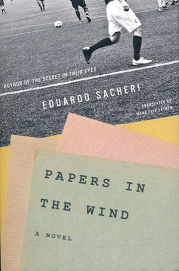
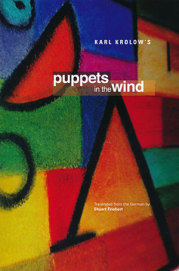
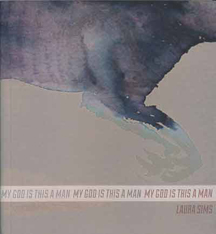
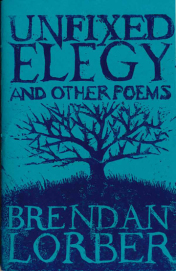 Brendan Lorber
Brendan Lorber